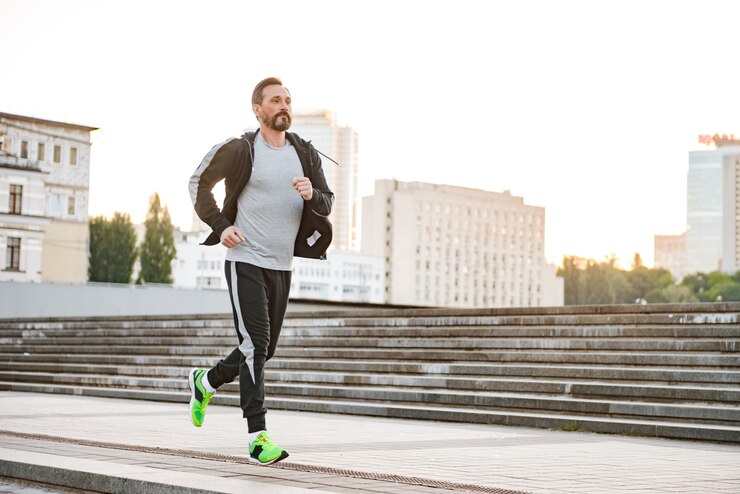They advise people not to focus on tracker numbers and instead use them as an overall guide.
- Researchers say people with diabetes, heart disease, and obesity can increase their physical activity levels by using fitness trackers.
- Experts say trackers can provide accountability and help people at all levels motivate themselves.
- They advise people not to focus on tracker numbers, but to use them as an overall guide.
Wearing a fitness tracker can help obese, diabetic, and heart disease patients increase their levels of physical activity.
This is a discovery analysis published this week in JAMA Network Open.
The researchers reviewed 38 randomized clinical trials with 4,203 participants. They reported that after about 15 weeks, the intervention of the wearable fitness tracker was associated with a significant increase in physical activity levels.
In about 70% of studies, devices such as pedometers or trackers were associated with higher levels of physical activity.
Even with significant improvements, participants still did not meet the recommendations for minimum physical activity highlighted in the report 2018 Physical Activity Guidelines Advisory Committee Scientific Report of the U.S. Department of Health and Human Services and other recommendations from governments and agencies around the world.
Health and Human Services officials recommend that adults do at least 150 to 300 minutes of moderate-intensity aerobic exercise per week, such as brisk walking or dancing fast.
Benefits of wearable fitness trackers
"Positivity is often one of the hardest habits to instill and maintain, especially during periods of long or uncontrolled stress," said Dr. Nancy Lin, an overall dietitian and fitness consultant associated with YogaSix GO.
"Coming out of a pandemic or starting a new fitness program can be daunting, and staying motivated, especially when introducing something new, sometimes diminishes or disappears when expectations of results are challenged," she told. ”
Lin said these monitoring devices act as accountability coaches while promoting personal safety and encouraging self-monitoring and biofeedback as well as personal responsibility by increasing the overall understanding of what's going on inside the body.
"Pedometers and other devices allow people to monitor the progress of exercise on their own," said Dr. Larinorland, a sports medicine physician at Ohio State University's Wexner Medical Center. "It also provides a way to share some data points with healthcare professionals."
"Even if a tracker doesn't perfectly estimate the distance you've traveled or the number of steps you've taken, it can provide a platform to compare days/activities," he told.
Fitness is a personal journey
"I believe it's important for people to recognize that this can be difficult for them and to start their own personal journey anew," Nolan said.
"The same motivators may not work for you for your family or friends," he added. "Reflect on it and prioritize what you want."
Nolan reminds us once again that it is a journey.
"You don't need to go from 100 steps on the pedometer to 15,000 steps the next day. Once you've prioritized your goals, start with small modifications," he advises.
Nolan's fitness goal-setting techniques include:
- Join a short walk during a lunch break or after dinner or before starting a new day.
- Understanding that taking on family and work obligations can be difficult, but your health needs to be a top priority in your life.
- Remember that setbacks or injuries are OK.
- Don't forget to reward yourself.
- Focus on positive movements (i.e., if you've added 1,000 steps, even if you haven't reached your goal yet).
- Strive to get better the next
Complications to consider
If you tend to focus on numbers or goals, you might be wondering if a fitness tracker is really your healthiest choice.
"Any habit that develops to extremes and begins to inhibit and destroy an individual's inner peace, even exercise, is possible," Lin said.
This means that people who are easy to fix or obsessed with may need to be careful with trackers.
Nolan explained that people with certain personality traits may also benefit or find the data overwhelming.
"People can allow information to be consumed or to change their eating habits, or to rely too much on information," he said.
For example, some people may tend to eat more, thinking they've burned a certain number of calories that may be overestimated, he said.
"Another person may be constantly thinking about data and negatively impacting their health goals," he said.
Lin agreed and offered a possible solution.
"People who may be very fascinated by some aspects of digital fitness trackers or biometric tools should consider adopting meditation or yoga practices to help balance and calm an often overworked mind," she said.
"This will help increase possible cognitive rigidity, mitigate excessive self-control, and improve self-compassion," Lin explains.
Lin uses the tracker's tips instead of focusing on numbers or goals:
- Before they become your problem, acknowledge and learn which destructive compulsive traits need to be noted.
- Listening to mindfulness or guided meditation or podcasts on how to calm the mind is beneficial (i.e. "Thinking with Dr. Nancy Lin" podcast).
Fitness trackers can also be misleading in the way information is presented or in the way people interpret that information.
Nolan explained that he warns many customers to be careful with data trackers, regardless of their medical history.
For example, he says, some people work 10,000 steps a day. These steps are broken down and usually do not have cardiovascular benefits. The same person who only uses a fitness tracker may think they've increased their activity, even though they're just starting to count the number of steps they've already taken.
"It can be useful information if used properly, but it's also not absolute," Nolan said. "Everyone's health or fitness goals are different, and past medical history may have certain limitations."

